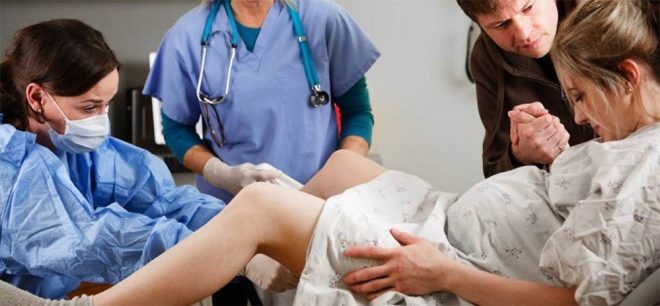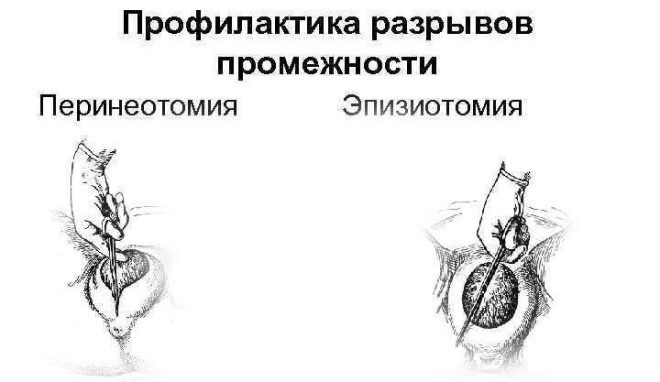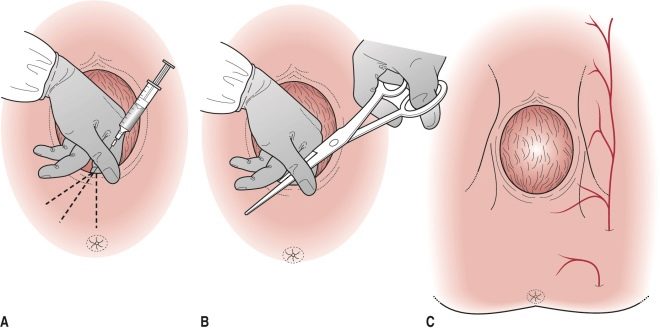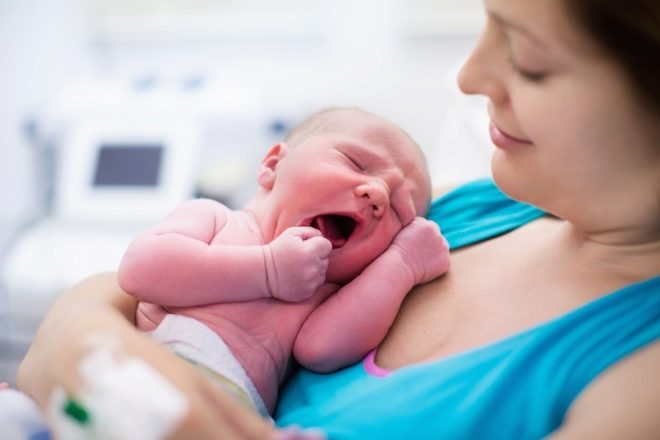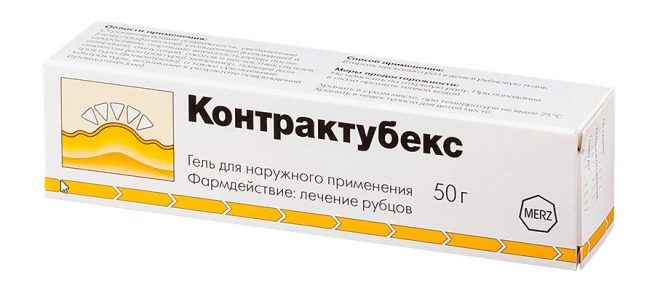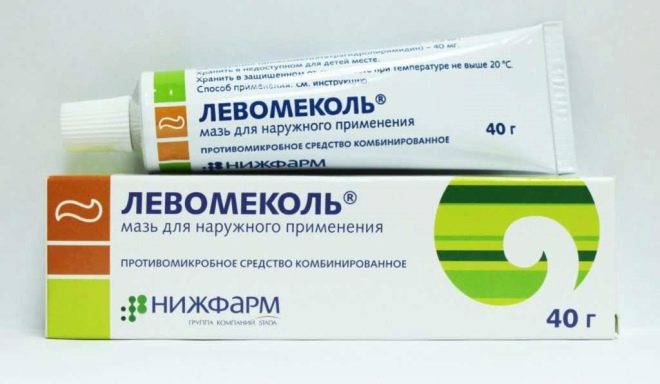Features of healing of sutures after episiotomy and solving possible problems
Not every birth do without auxiliary obstetric techniques. Sometimes there is a need to make a perineal incision in order to facilitate the passage of the child through the genital tract and prevent spontaneous ruptures of the perineum. Stitches, which are then applied, in the postpartum period will be a matter of particular concern. In this article we will tell you what the features of the healing of such stitches are and what problems a woman can face.
The purpose and methods of the procedure
The artificial dissection of the perineum is called episiotomy. In such a small surgical procedure, a need arises if, during natural childbirth, there is a high risk of perineal rupture.
Doctors expand the incision out of the vagina, thereby reducing the risk of rupture, as well as the likelihood of the baby getting a birth injury, because it becomes easier and faster for him to be born.
The procedure is done only in the second stage of labor, when the woman starts the attempts, at the time of the birth of the head and shoulders. If the exit of the head is physiologically difficult, the problem is solved with a notch. There are four ways of dissection, but in Russian obstetric practice only two are usually used - median-lateral and perineotomy. In the first case, a cut length of about 3 centimeters is located from the center of the perineum to the right or left, and with perineotomy - down, in the direction of the anus, but not reaching it.
Technique of
Everything is done simply - at the peak of attempts, when the head peeps through, the crotch that has been pre-treated with an antiseptic is cut with surgical scissors. Suture wound after childbirth, after the birth of the placenta.
Sewing is carried out with the use of anesthesia, even if cut without one. What kind of technique will be used, what kind of suture materials the medical professional will choose, how the seam will heal and how likely the complications are.
If there is damage to the genital tract, cervix, first put internal sutures. The threads use self-absorbable, which do not need to be processed and removed, after a certain period of time they dissolve independently. The outer seams can be applied with silk thread stitches in the shape of eight (the so-called Shute technique). Threads pass through all layers at the same time. The probability of complications and problems in the healing of such stitches is higher.
The optimal layer-wise and gradual suturing of the wound edges. First, they put internal seams on the back wall of the vagina, then sew muscle tissue, and then outside they perform a solid cosmetic seam. The stitches after episiotomy are treated with an antiseptic and on this the genera are considered complete.
Recovery time
The presence of stitches in the perineum after childbirth aggravates recovery - the woman is restricted in movement, she must constantly remember that the perineum can not be tense. The main feature of the surgical stitches imposed after the performed episiotomy is that healing for natural reasons is slower than scarring of the stitches on exposed skin surfaces.
Crotch - a place that does not allow the stitched area to come into contact with open air, and that is what could accelerate healing.
The treatment is also associated with certain difficulties and is possible only with outside help, the woman herself is very, very difficult to handle the wound.
Episiotomy sutures are often inflamed, since it is not possible to put a sterile dressing on them, as is done for a cesarean section wound. In the first days after birth, the genital organs are very bloody - lochia leaves, the uterus self-cleans, the uterus undergoes the process of involution - the reverse development. Lohia necessarily need a free exit, and it is impossible to put a bandage for this reason.
Lochia, which are blood secretions (placental wound is bloody on the inner wall of the uterus, where the placenta was located) are dangerous for the sutures, because blood is a favorable breeding ground for bacteria. And even conditionally pathogenic microorganisms living on the skin and in the intestines may well cause serious bacterial inflammation. Given the location of stitches, it is easy to guess that contact with bacteria is very possible.
The anatomical location of the perineum cannot provide temporary rest to damaged and sutured tissues. When moving, defecating, urinating, when the tension of the abdomen invariably strained and the perineum. That is why, and also because of the dissection of the nerve endings in the first days after the episiotomy, the stitches ache, in the intermediate region pulls. As the suture heals, the pain decreases. After 5-7 days, the wound edges are fully joined.
On the 8-9 day most often remove the stitches. Often in the healing process, they itch, whine. Gradually, after 3-4 weeks, the stitches will heal completely. Some compaction at the site of suturing persists up to six months. Cosmetic seam looks aesthetically pleasing, and you can not worry about it. When it stops bothering the surgical suture overlap area, it depends a lot on how the woman will take care of her, whether she will follow all the doctor's recommendations.
Care instructions
A woman who has suffered an episiotomy cannot sit down after giving birth. Firstly, it hurts, and secondly, the tension of the skin in this position can lead to a divergence of the seams. If the incision was oblique (median-lateral), then you can gently sit down on one thigh opposite to the direction of the seam.
If the incision is held to the left, then sit on the right thigh, and vice versa. About three weeks will need to sit down just like this, and all the usual actions and care for the baby to carry out standing or lying on its side.
For safety reasons, it is better not to make sharp rises from a prone and sitting position; move carefully, smoothly and carefully.
Proper treatment and care will help avoid complications and infections, and will promote tissue repair. Recommendations in this case are:
change bedcloths more often, use sterile bedplates provided by the maternity hospital, and on the second day you can switch to sterile special pads for women in childbirth;
wash off after each visit to the toilet, at the same time make a hand movement from the pubis to the anus, not the other way round;
at home you can wash yourself with a weak solution of potassium permanganate - this effectively dries the wound;
the crotch is not wiped, but propped with a soft cloth or diaper;
It is necessary to process the stitches every day - first apply a little hydrogen peroxide, and then smear the edges of the wound with green paint. At home, a spouse can help.
Once a day, it is advisable to leave the perineum open for 20-30 minutes to heal faster. You should not take a bath in the first 4 weeks, this will increase the likelihood of wound infection. It is better to take a shower.
After a month, when the main restrictions are lifted, a woman can start using tools that increase the elasticity of the scar - gelContractubexIt can be used if there are no complications.
Complications and treatment
Negative consequences after an episiotomy do not happen as rarely as women and doctors would like, because healing, as we found out, has specific features. Some symptoms and signs need special attention.
Too long healing
If a week after birth, the seam continues to bleed, getting wet, it is possible that the infection has occurred. It is imperative that you see a doctor in order to get qualified help.
Compaction
A scar, moderately compacted over the entire length, is initially considered a variant of the norm. But the formation of a bump on or near the rumen may indicate uneven joining of the wound edges, as well as internal hematomas. The situation requires treatment. When hematomas are detected, surgical assistance is sometimes needed to remove them.
Inflammation
Manifested by the fact that the seam swells, reddens, hurts when touched. Often it is bloody or festering. The woman has a fever, discharge from the genitals can be yellowish with an unpleasant smell. The situation requires the appointment of local and sometimes systemic antibiotics and anti-inflammatory drugs. When handling the wound is washed, if there is a lot of pus, then drainage is put. If the seam is inflamed and festered in the later period, consider the probability of the formation of fistulas.
Discrepancy
Understand that the seam is sold out, a woman can by the appearance of blood flow, by increased pain. Not all discrepancies require repeated suturing. Only extensive and deep. Minor ones do not require special treatment, except for applying topically to the area where the ointment threads overlap.Levomekol". Such discrepancies usually grow together by the method of secondary tension.
Discomfort during intercourse
They are mechanical. It is impossible to anesthetize the overlapping area in this case, you just need to wait a bit, choosing postures for intimate contacts in which the tension of the perineal tissues will be gentle. Usually, after six months, dyspareunia disappears and the sexual positive feelings return to full.
With repeated birth, a well-healed elastic scar does not pose a great danger. But in order for it to heal properly and not be ill, neither in half a year, nor after 3 years, it is necessary to follow the recommendations and timely treat the problems that have arisen.

